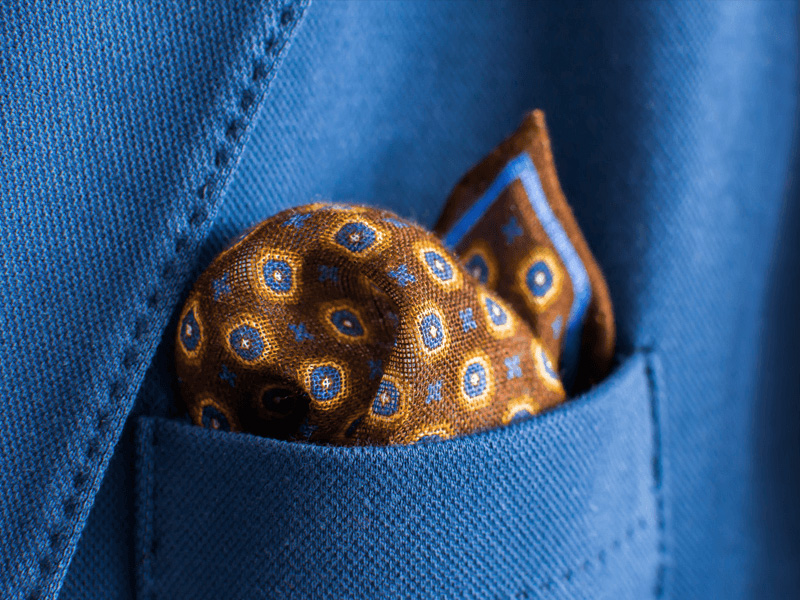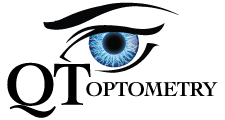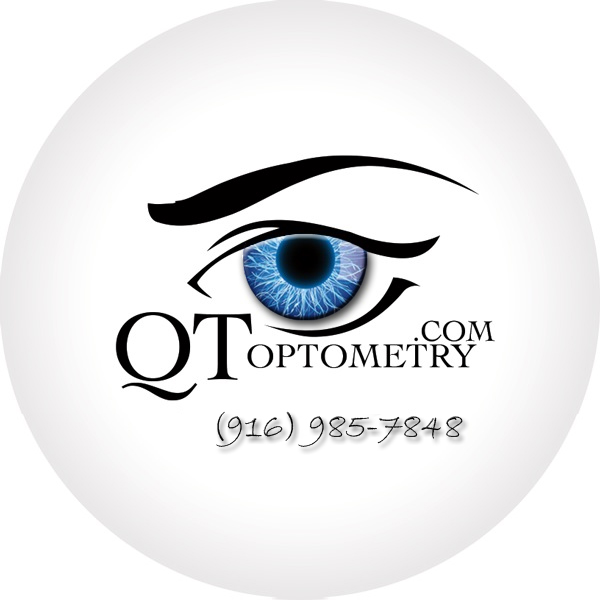Overnight Orthokeratology Contact Lenses:
Precautions:
- General Clinical studies have demonstrated that Orthokeratology Lenses are safe and effective for their intended use. However, due to the small number of patients enrolled in the clinical investigation of lenses, all refractive powers, design configurations, and lens parameters available in the lens materials were not evaluated in significant numbers.
- This is especially true for adolescent subjects in this investigation. Consequently, when selecting an appropriate lens design and parameters, Dr. Q has to consider all characteristics of the lens that can affect lens performance and your ocular health; including, oxygen permeability, wettability, central and peripheral thickness, and optic zone diameter.
- The potential impact of these factors on your ocular health must be carefully weighed against your need for refractive reduction; therefore, your continuing ocular health and lens performance on your eye should be carefully monitored by Dr. Q on a very regular basis.
- Corneal edema is more prevalent when the lens is used in high altitudes.

Caring for Your Orthokeratology Lenses
- For continued safe and comfortable wearing of your lenses, it is important that you clean and rinse, then disinfect your lenses, after each removal using the care regimen recommended by Dr. Q.
- Cleaning and rinsing are necessary to remove mucus, secretions, films, or deposits, which may have accumulated during wearing.
- The ideal time to clean, rinse, and disinfect your lenses is immediately after wearing them.
- Disinfecting is necessary to destroy harmful germs.
- You should adhere to a recommended care regimen.
- Failure to follow the regimen may result in development of serious ocular complications as discussed in the WARNINGS section of the Pamphlet.
- When you first receive your lenses, practice how to put the lenses on and how to remove them while you are at QT Optometry. At that time, you will be provided with a recommended cleaning and disinfection regimen and, instructions and warnings for lens care, handling, cleaning, and disinfection.
- For safe contact lens wear you should know and always practice your lens care routine.
- Always wash, rinse, and dry hands before handling contact lenses.
- Always use fresh unexpired lens care solutions.
- Use the recommended system of lens care, which is chemical (not heat) and carefully follow instructions on solution labeling.
- Different solutions cannot always be used together and not all solutions are safe for use with all lenses.
- Do not alternate or mix lens care systems unless indicated on solution labeling.
- Always remove, clean, rinse, enzyme, and disinfect your lenses according to the schedule prescribed by your eye care practitioner.
- The use of an enzyme or any cleaning solution does not substitute for disinfection.
- To avoid contamination, do not use saliva, tap water, or anything other than the recommended solutions for lubricating or rewetting your lenses.
- Do not put lenses in your mouth.
- You should not switch from one care system to another unless it has been determined by the eye care practitioner that this is necessary.
- Do not mix or alternate the disinfection and storage systems unless so indicated on the product label.
- Always wash and rinse your hands thoroughly before handling your contact lenses.
- Clean one lens first (always start with the same lens first to avoid mix-ups).
- Place the lens, front side down, in the palm of the hand and apply several drops of cleaning solution.
- Using the index finger of the other hand, apply slight pressure in a swirling motion for the time recommended by Dr. Q.
- Do not clean the lens by rubbing it between the thumb and index fingers, as this may cause lens warpage.
- Rinse the lens thoroughly as recommended by your lens care product manufacturer to remove the cleaning solution, mucus, and film from the lens surface.
- Place that lens into the correct chamber of the lens storage case.
- Then repeat the clean and rinse procedure for the second lens.
- After cleaning and rinsing the lenses disinfect them by using the system recommended by Dr. Q.
- Follow the instructions provided in the disinfection solution labeling.
- To store lenses, disinfect, and leave them in the closed case until ready to wear.
- If lenses are not to be used immediately following disinfection, you should consult the storage solution package insert or your eye care practitioner for information on storage of your lenses.
- Always keep your lenses completely immersed in a recommended disinfecting/conditioning solution when the lenses are not being worn.
- If you discontinue wearing your lenses, but plan to begin wearing them again after a few weeks, please ask Dr. Q for a recommendation on how to store your lenses.
- Typically, Dr. Q will start your overnight wear the first night.
- You should place the lens in your eye 15 to 20 minutes before going to sleep.
- A well fit lens provides for centration with the closed eye.
- The effects of lid interaction on blinking and gravity may result in lens decentration during open eye wear.
- Be aware, “when in doubt, take it out”.
- It is important that the new wearer not sleep in a lens that has a significant foreign body sensation.
- In the event of foreign body sensation, remove the lens, clean and re-wet it; and, again place the lens in your eye.
- If the sensation continues, remove the lens. The lens should not be worn.
- Q will schedule a follow – up evaluation the morning after the first overnight wear.
- The visit is best scheduled within a few hours of awakening and you should report back to QT Optometry with your lenses in place. This visit provides an excellent opportunity to evaluate lens centration and potential lens adherence.
- Assuming the absence of clinical signs and complications, you will be instructed to continue overnight wear of the lenses until the next scheduled follow – up visit.
- The cornea normally changes within five to eight hours of wear. Q will modulate your wearing time to determine the MINIMUM wear required for myopic (nearsightedness), hyperopic (farsightedness), or astigmatic reduction.
- The average wearing time is between 8 and 10 hours.
- Attempt to maintain wearing time at this minimum level.
- The lens used to achieve corneal refractive therapy is usually the lens used to maintain the achieved correction.
- To maintain the Contact Lens Corneal Reshape/Refractive Therapy effect of myopia reduction, overnight lens wear must be continued on a prescribed schedule. Failure to do so can affect daily activities (e.g., night driving), visual fluctuations, and changes in the intended correction.
- Orthokeratology Therapy; Corneal Refractive Therapy contact lenses cannot be heat (thermally) disinfected.
- Your contact lens cases can be a source of bacteria growth.
- After removing your lenses from the lens case, empty and rinse the lens storage case with solution(s) recommended by Dr. Q; then allow the lens case to air dry.
- When the case is used again, refill it with fresh disinfecting solution.
- Lens cases should be replaced at regular intervals as recommended by Dr. Q.
- Q may recommend a lubricating/rewetting solution.
- Lubricating/Rewetting solutions can be used to rewet (lubricate) your lenses while you are wearing them to make them more comfortable.
- Lens Deposits And Use Of Enzymatic Cleaning Procedure.
- Enzyme cleaning removes protein deposits on the lens. These deposits cannot be removed with regular cleaners.
- Removing protein deposits is important for the well-being of your lenses and eyes. If these deposits are not removed, they can damage the lenses and cause irritation.
- Enzyme cleaning does not replace routine cleaning and disinfecting.
- Care For A Sticking (Nonmoving) Lens:
- If the lens sticks (stops moving) or cannot be removed, you should apply 2 drops of the Unique pH lubricating or rewetting solution directly to the eye and wait until the lens begins to move freely on the eye before removing it.
- If non – movement of the lens continues after 30 minutes, you should IMMEDIATELY consult Dr. Q.
- If chemicals of any kind (household products, gardening solutions, laboratory chemicals, etc.) are splashed into your eyes, you should:
- FLUSH YOUR EYES IMMEDIATELY WITH TAP WATER.
- REMOVE YOUR LENSES.
- IMMEDIATELY CONTACT DR. Q
- VISIT A HOSPITAL EMERGENCY ROOM WITHOUT DELAY.
Personal Cleanliness and Lens Handling
- It is essential that you learn and use good hygienic methods in the care and handling of your new lenses.
- Cleanliness is the first and most important aspect of proper contact lens care. In particular, your hands should be clean and free of any foreign substance when you handle your lenses. The procedures are:
- Always wash your hands thoroughly with a mild soap, rinse completely, and dry with a lint-free towel before touching your lenses.
- Avoid the use of soaps containing cold cream, lotion, or oily cosmetics before handling your lenses, since these substances may come into contact with the lenses and interfere with successful wearing.
- To avoid damaging your lenses, handle them with your fingertips, and be careful to avoid contact with your fingernails. It is helpful to keep your fingernails short and smooth.
- Start correctly by getting into the habit of always using proper hygienic procedures so that they become automatic.
- Develop the habit of always working with the same lens first to avoid mix – ups.
- Remove the lens from its storage case and examine it to be sure that it is moist, clean, and free of any nicks and cracks.
- Work over a table, upon which is placed a clean towel.
- Do not place lenses on the eye while working over a sink.
- For the right eye:
- Wet your right index finger with a drop of conditioning solution and place the contact lens front side down on your right index finger.
- Place the second finger of the left hand on the middle of the upper lid and press firmly upward.
- Place the second finger of the right hand on the lower lid and press firmly downward.
- Stare into a mirror as though looking through the second finger holding the contact lens. You will later learn to do this without a mirror.
- Slowly move the hand to advance the forefinger with the contact lens towards the cornea until the lens touches the cornea and release the lids.
- Release the lid and close the eye for a few seconds.
- Repeat procedure for the left eye.
- There are other methods of lens placement. If this method is difficult for you, Dr. Q will provide you with an alternate method.
- Note: If after placement of the lens your vision is blurred, check for the following:
- The lens is not centered on the eye (see “Centering The Lens”, next section in this booklet).
- If the lens is centered, remove the lens (see “Removing The Lens” section) and check for the following:
- Cosmetics or oils on the lens. Clean, rinse, disinfect, and place on the eye again.
- The lens is on the wrong eye.
- If you find that your vision is still blurred after checking the above possibilities, remove both lenses and consult Dr. Q.
- Very rarely, a lens that is on the cornea will be displaced onto the white part of the eye during lens wear.
- This may also occur during placement and removal of the lenses if the correct techniques are not performed properly.
- To center a lens follow this procedure:
- First locate the lens by pulling away the lids.
- After the lens is found, gently press on the lid over the lens while looking away from the direction of the lens.
- Next look back towards the lens.
- Always remove the same lens first.
- Wash, rinse, and dry your hands thoroughly.
- Work over a table with a clean towel.
- Do not remove lenses over a sink.
- Place right index finger at outer corner of the eye.
- Place the left hand cupped below the eye.
- Open the eyes wide as if to stare.
- Continue to keep eyes open and pull the lids sideways away from nose.
- Blink quickly and firmly.
- Remove the second lens by following the same procedure.
- If you choose to use a DMV Classic lens remover device, compress the handle of the DMV between your thumb and index finger while looking straight ahead carefully center it squarely on the contact lens.
- When the Classic has been seated on the lens, release the compression pressure and gently tip the remover down to retract the lens.
- Always be aware of the position of the lens on the eye before applying the Classic to the lens.
- Then, squeeze the stem of the remover again to release the suction and slide the lens from the remover between your thumb and forefinger.
- Remove second lens following the same procedure.


Special Precautions
- Different solutions cannot always be used together and not all solutions are safe for use with all lenses.
- Do not heat the wetting/soaking solution and lenses.
- Always use fresh unexpired lens care solutions.
- Use only a chemical lens care system. Use of a heat (thermal) lens care system can cause damage by warping your contact lenses.
- Do not use saliva, tap water or anything other than the recommended solutions for lubricating or wetting lenses.
- Always keep the lenses completely immersed in the recommended storage solution when the lenses are not being worn (stored).
- Always wash and rinse hands before handling lenses.
- Do not get cosmetics, lotions, soaps, creams, deodorants, or sprays in the eyes or on the lenses. It is best to put on lenses before putting on makeup. Water – base cosmetics are less likely to damage lenses than oil – base products.
- Be certain that your fingers and hands are free of foreign material before touching your contact lenses, as microscopic scratches of the lenses may occur, causing distorted vision and/or injury to the eye.
- Carefully follow the handling, insertion, removal, cleaning, disinfecting, storing, and wearing instructions in this booklet and those prescribed by Dr. Q.
- Always handle your lenses carefully and avoid dropping them.
- Never use tweezers or other tools to remove your lenses from the lens container unless specifically indicated for that use. Pour your lens into your hand.
- Do not touch the lens with your fingernails.
- To minimize lens warpage during cleaning, the lenses should be cleaned in the palm of the hand rather than between the thumb and fingers.
- Contact lens cases can be a source of bacterial growth.
- To prevent contamination and to help avoid serious eye injury, always empty and rinse the lens case with fresh, sterile rinsing solution and allow to air dry.
- Lens cases should be replaced at regular intervals, as recommended by Dr. Q, at least once per three months period.
- Clean and condition lenses prior to use.
- If the lens sticks (stops moving) on the eye, follow the recommended directions on “Care For a Sticking (Nonmoving) Lens” in this patient information booklet.
- The lens should move freely on the eye for the continued health of the eye. If non – movement of the lens continues, you should immediately consult Dr. Q.
- Never wear your contact lenses beyond the period recommended by Dr. Q.
- Avoid, if possible, all harmful or irritating vapors and fumes when wearing lenses.
- If aerosol products such as sprays are used while wearing lenses, exercise caution and keep eyes closed until the spray has settled.
- Always contact Dr. Q before using any medicine in your eyes.
- As with any contact lens, follow – up visits are necessary to assure the continuing health of your eyes.
- You should be instructed as to a recommended follow – up schedule.
- Inform your doctor (health care practitioner) about being a contact lens wearer.
- If you choose to wear your lenses while at work always inform your employer of being a contact lens wearer. Some jobs may require the use of eye protection equipment or may require that you not wear contact lenses during work hours.
Adverse Effects (Problems and What to Do)
- Eyes stinging, burning, itching (irritation), or other eye pain.
- Comfort is less than when lens was first placed on eye.
- Feeling of something in the eye such as a foreign body or scratched area.
- Excessive watering (tearing) of the eyes.
- Unusual eye secretions.
- Redness of the eyes.
- Reduced sharpness of vision (poor visual acuity).
- Blurred vision, rainbows, or halos around objects.
- Sensitivity to light (photophobia).
- Dry eyes.
- IMMEDIATELY REMOVE YOUR LENSES.
- If the discomfort or problem stops, then look closely at the lens. If the lens is in any way damaged, DO NOT put the lens back on your eye.
- Place the lens in the storage case and contact Dr. Q.
- If the lens has dirt, an eyelash, or other foreign objects on it, or the problem stops and the lens appears undamaged, you should thoroughly clean, rinse and disinfect the lens; then reinsert it.
- If the problem continues, you should IMMEDIATELY remove the contact lenses and consult Dr. Q.
- When any of the above problems occurs, a serious condition such as infection, corneal ulcer, neovascularization, iritis, persistent stromal edema or GPC (giant papillary conjunctivitis) may be present.
- You should keep the lens off the eye and seek immediate professional identification of the problem and prompt treatment to avoid serious eye damage, including:
- corneal scarring.
- opacification.
- blindness or loss of eye.


